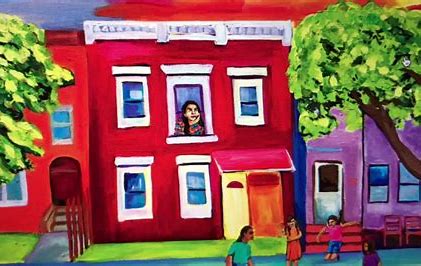Physical Address
304 North Cardinal St.
Dorchester Center, MA 02124
Physical Address
304 North Cardinal St.
Dorchester Center, MA 02124

Within the novel The House on Mango Street, author Sandra Cisneros explores the dynamics of women’s lives were social constraints predefine the circumstances of women for most of the women in, The House On Mango Street. These constraints are too powerful to overcome, displaying reoccurring themes of gender, identity, and sexuality in this novel. Our main character, Esperanza shows the feminine perspective of a young girl coming of age, and sharing her impressions on the world around her, through a series of short stories. Esperanza lives in a Chicano community where societal norms, confine women to marriage, domestic and limited independent choices. The women within this novel deal with demeaning fathers and husbands or face challenges of being single mothers under difficult circumstances. Mango Street is home too many some with lighthearted stories some with harsher realities. Through Esperanza‘s point of view, we the reader get a better glimpse of the experience of others and how they imprint onto her. For instance, the story The Family of the Little Feet, dives into Esperanza’s search of identity and exploring sexuality. Esperanza watch the teenage girls on mango Street for hints of how to become a woman and how to act when older. She, along with her sister Nanny, and friends Lucy and Rachel, realize that portraying themselves is riskier than empowering when a neighbor offers them four sets of secondhand high heels they escaped from an encounter from a homeless man after walking around in heels, trying to portray themselves as older. These girls having changed their minds, decided to never wear high heels again.

“When you leave you must remember to come back for the others. A circle, understand? You will always be Esperanza. You will always be Mango Street You can’t erase what you know. You can’t forget who you are.”
The older woman on Mango Street also influence Esperanza with their wisdom that comes from unfortunate experience. They advise Esperanza to not give up her independence and dreams for a man. Her sister also eventually tell Esperanza she will go far in life and remember to come back to Mango Street for the others who do not get as far. By engaging with her neighbors, Esperanza creates an attachment to mango Street that makes her unsure if she should leave or not. Esperanza becomes torn between her connection to her cultural traditions and her growing desire to seek a better life outside of the barrio of Chicago. This causes conflict as she navigates her cultural identity and aspirations. 
Comments are closed.
Your summary of The House on Mango Street is very well written! I really liked how you talked about Esperanza showing the feminine perspective for a young girl who is becoming of age. I also agree with what you included regarding Esperanza‘s point of view, and that it allows readers to get a better idea of the experience of others and how the effect her.
I like your analysis of the book; it’s well written and easy to understand! Esperanza has met many women who faced unfortunate fates due to the patriarchal society they live in, which left her feeling hopeless and confused about whether she should come back or leave for a better life. I think the three women and Alicia have a greater impact on Esperanza’s decision to want to leave Mango Street, but she feels guilty for leaving her neighbors and family behind. Great post!